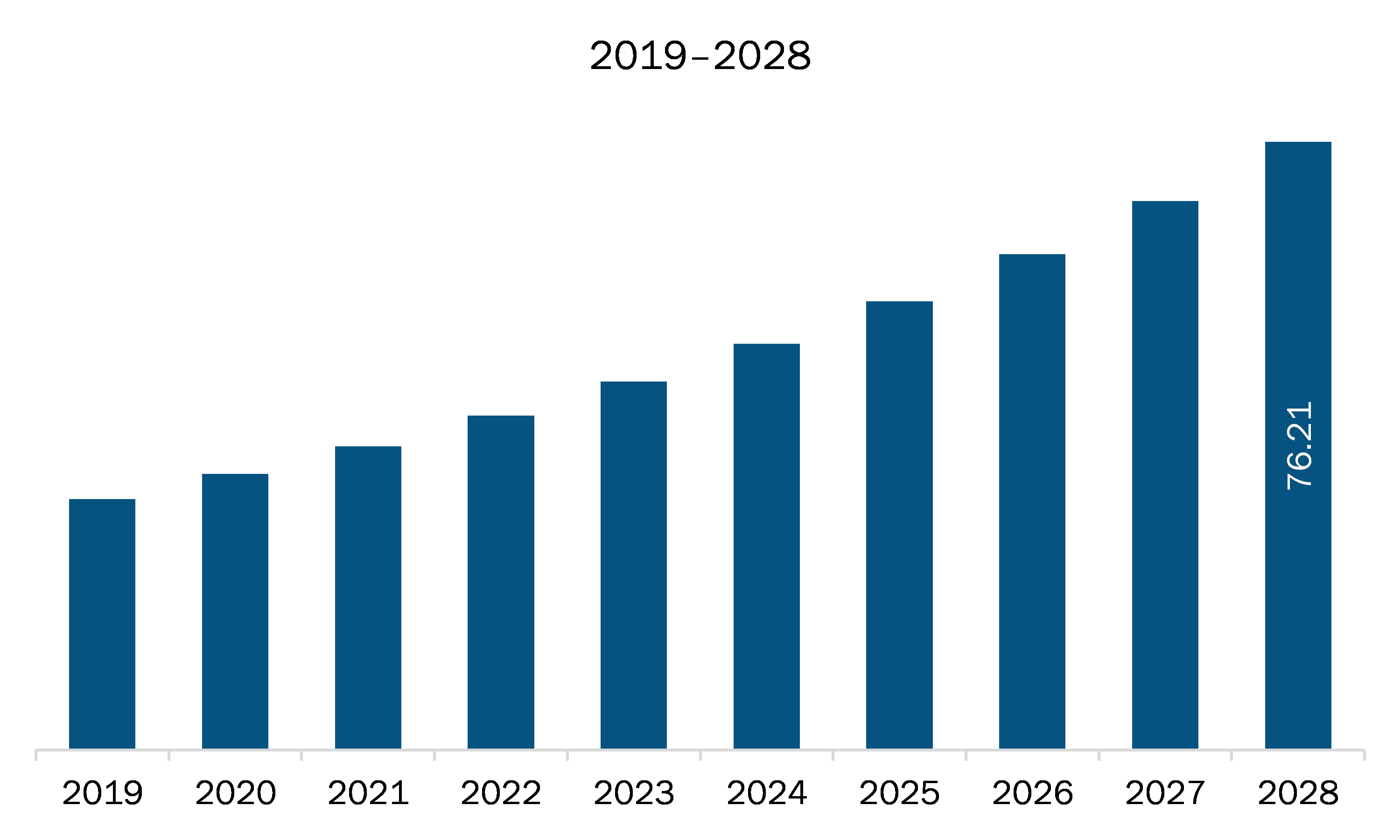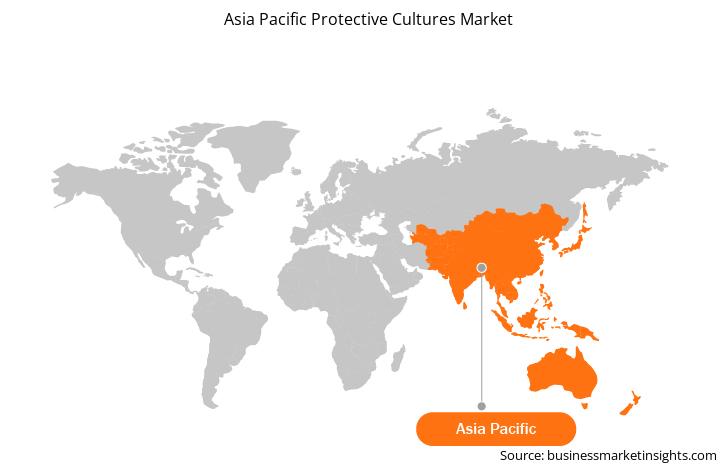The protective cultures market in Asia-Pacific is segmented into Australia, China, India, Japan, South Korea, and the rest of Asia-Pacific. China is the most important dairy product market and is mainly driven by the increasing consumption of dairy products. The growing demand for dairy products such as natural snacks, fermented dairy products such as sour milk, and yogurt coupled with product and packaging innovations is driving the growth of the dairy product market in Asia-Pacific. Therefore, the protective cultures market is expected to witness significant growth in the coming years owing to the increasing consumption of dairy products and the benefits of protective cultures, such as the ability to inhibit the growth of pathogenic and spoilage microorganisms. Moreover, increasing awareness about natural and clean label products amongst the Asian population is subsequently aiding the market expansion. With rising dairy consumption across Asia-Pacific, there is a great demand for sustainable dairy products with natural and short ingredient lists in product labeling. This factor would boost the growth of the protective cultures market in the region in the coming years. Protective cultures, commonly called bacterial cultures, are used in dairy products and meat to extend their shelf life. The short shelf life of these foods has become a major concern for the food & beverages industry. The use of protective culture is helping in overcoming these concerns, which is driving the market growth in the region. In addition, due to the changing lifestyles and eating habits of consumers, there is a rising demand for processed and packaged food. Protective culture helps in extending the shelf life of convenience products. Therefore, the protective culture market is expected to grow significantly during the forecast period. Further, pet food and animal feed manufacturers are cautious about issues such as enhancing food or feed palatability, keeping freshness, and reducing mold growth. Protective cultures are used in pet food and animal feed to prevent the formation of mold and fungi, as well as to improve the palatability and freshness of the products. Furthermore, rising consumer preference for clean label pet food and animal feed in Asia-Pacific is expected to create lucrative opportunities for the protective cultures market in the region during the forecast period.
Asian economies have been hit hard by the COVID-19 pandemic. India has recorded the highest number of cases, and the emergence of new COVID-19 waves in India, Thailand, and other Asian economies has prolonged the effect of pandemic upon the food & beverages industry. The governments of various APAC economies are taking possible steps to restrict the spread of the virus, which is directly impacting the growth of industrial sectors, in turn, negatively affecting the protective cultures market growth.

Strategic insights for the Asia Pacific Protective Cultures provides data-driven analysis of the industry landscape, including current trends, key players, and regional nuances. These insights offer actionable recommendations, enabling readers to differentiate themselves from competitors by identifying untapped segments or developing unique value propositions. Leveraging data analytics, these insights help industry players anticipate the market shifts, whether investors, manufacturers, or other stakeholders. A future-oriented perspective is essential, helping stakeholders anticipate market shifts and position themselves for long-term success in this dynamic region. Ultimately, effective strategic insights empower readers to make informed decisions that drive profitability and achieve their business objectives within the market.

| Report Attribute | Details |
|---|---|
| Market size in 2021 | US$ 38.04 Million |
| Market Size by 2028 | US$ 76.21 Million |
| Global CAGR (2021 - 2028) | 10.4% |
| Historical Data | 2019-2020 |
| Forecast period | 2022-2028 |
| Segments Covered |
By Target Microorganism
|
| Regions and Countries Covered | Asia-Pacific
|
| Market leaders and key company profiles |
The geographic scope of the Asia Pacific Protective Cultures refers to the specific areas in which a business operates and competes. Understanding local distinctions, such as diverse consumer preferences (e.g., demand for specific plug types or battery backup durations), varying economic conditions, and regulatory environments, is crucial for tailoring strategies to specific markets. Businesses can expand their reach by identifying underserved areas or adapting their offerings to meet local demands. A clear market focus allows for more effective resource allocation, targeted marketing campaigns, and better positioning against local competitors, ultimately driving growth in those targeted areas.

The protective cultures market in APAC is expected to grow from US$ 38.04 million in 2021 to US$ 76.21 million by 2028; it is estimated to grow at a CAGR of 10.4% from 2021 to 2028. Increasing concerns for food wastage; according to world wildlife fund, sustainability and food wastage are influencing the food industry as the global population is projected to attain 9 billion by 2050. It is vital that food producers act with sustainability in mind. Reports indicate that over 10–20% of the production of milk and other dairy products in developed countries is wasted or lost, and about half of this waste occurs by consumers after purchase due to factors such as shelf-life restrictions or microbial spoilage. Recent research confirms that product shelf life remains a crucial purchasing condition for consumers. Therefore, it is becoming essential for producers to consider the open shelf life of products to support a sustainable supply chain and lessen their contribution to the food waste burden. 1.3 billion tons of food is wasted every year. In industrialized countries, more than 40% of loss happens at a retail and consumer level. Research indicates that increased shelf life of just one day could prevent up to 0.2 million tons of annual household food waste. Hence, improved shelf life that reduce wastage of the food products and contributes to a more sustainable world would bolster the growth of the protective cultures market during the forecast period. This is bolstering the growth of the protective cultures market.
Based on target microorganism, the APAC protective cultures market is bifurcated into bacteria, and yeasts & molds. In 2020, the yeasts & molds segment held the largest share APAC protective cultures market. Based on application the market is divided into food processing and animal feed. The food processing segment accounts for largest market share in the 2020. Similarly, based on food processing, the market is bifurcated into dairy products
A few major primary and secondary sources referred to for preparing this report on the protective cultures market in APAC are company websites, annual reports, financial reports, national government documents, and statistical database, among others. Major companies listed in the report are Bioprox, Chr. Hansen Holding A/S, DSM, Lallemand Inc., International Flavors & Fragrances Inc., Kerry Group and Sacco System among others.
The Asia Pacific Protective Cultures Market is valued at US$ 38.04 Million in 2021, it is projected to reach US$ 76.21 Million by 2028.
As per our report Asia Pacific Protective Cultures Market, the market size is valued at US$ 38.04 Million in 2021, projecting it to reach US$ 76.21 Million by 2028. This translates to a CAGR of approximately 10.4% during the forecast period.
The Asia Pacific Protective Cultures Market report typically cover these key segments-
The historic period, base year, and forecast period can vary slightly depending on the specific market research report. However, for the Asia Pacific Protective Cultures Market report:
The Asia Pacific Protective Cultures Market is populated by several key players, each contributing to its growth and innovation. Some of the major players include:
The Asia Pacific Protective Cultures Market report is valuable for diverse stakeholders, including:
Essentially, anyone involved in or considering involvement in the Asia Pacific Protective Cultures Market value chain can benefit from the information contained in a comprehensive market report.